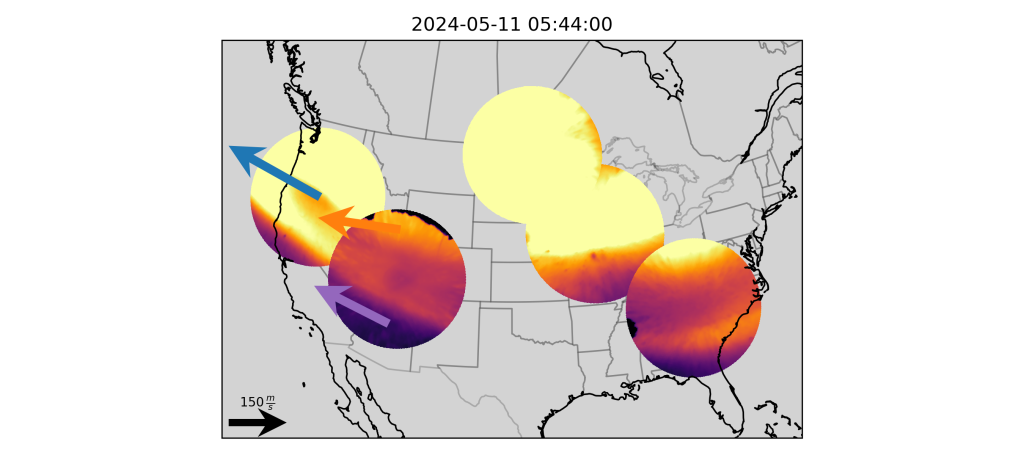The historic May 11, 2024 geomagnetic storm awed aurora watchers in all 50 states, and scientists are actively analyzing data to determine its impacts on our atmosphere. One example is the NSF-supported MANGO network (Mid-latitude All-sky-imaging Network for Geophysical Observations) in the continental US. MANGO is a partnership between SSL, the University of Illinois and SRI (lead); SSL’s assistant research physicist Brian Harding is one of the co-Is. MANGO provides images of airglow and auroral emissions with simultaneous and co-located observations of the temperature and motion of the upper atmosphere. This movie shows the extent of the red aurora occurring at 250-350km in altitude over middle latitudes. Because this red aurora takes place at such high altitudes, it is also seen from distant locations. MANGO observed wind speeds over the US that reached 600 m/s (1300 mph, almost supersonic at these altitudes), and temperatures reached 2200 K (3500 F, 900 deg hotter than any previous MANGO measurement). Although scientists have been monitoring these kinds of interactions at auroral latitudes for decades, this superstorm has provided a novel widespread dataset at middle latitudes, which is allowing scientists to better study the processes by which energy from the solar wind and magnetosphere gets transformed, globally distributed, and dissipated by our planet.


